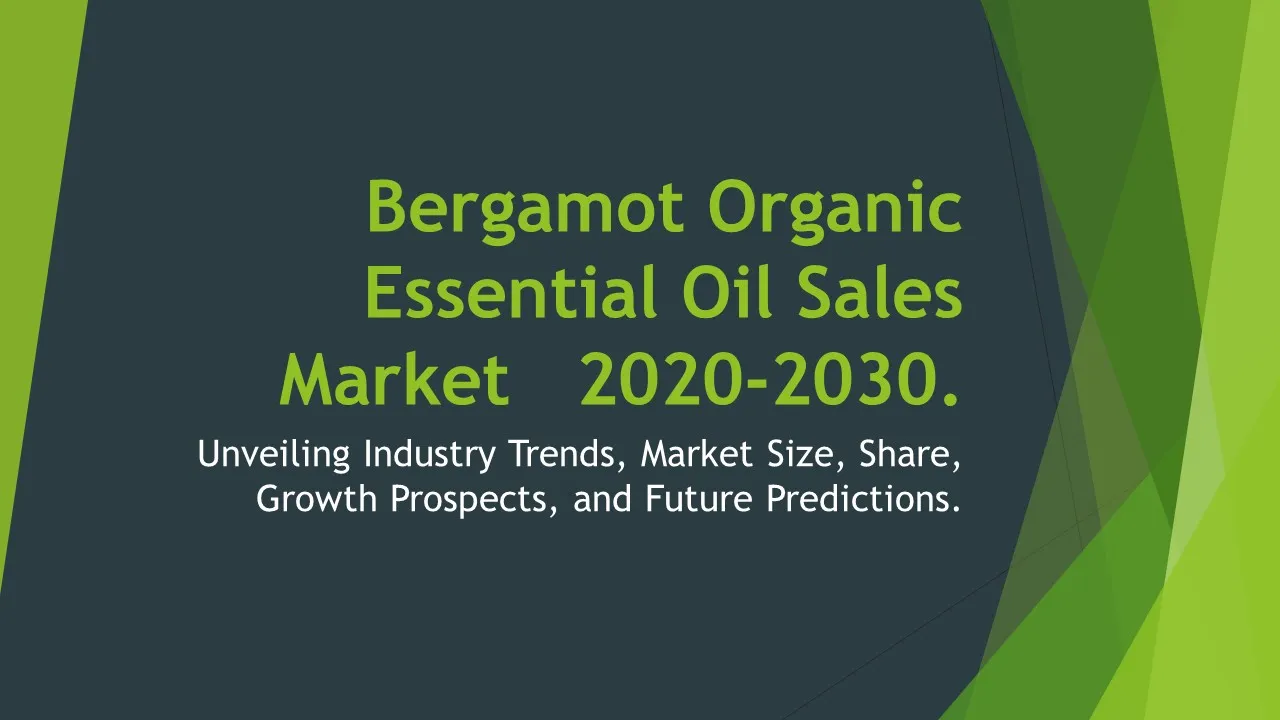Non Alcoholic Wines
Non-Alcoholic Wines Market Segments - by Product Type (Red Non-Alcoholic Wines, White Non-Alcoholic Wines, Rose Non-Alcoholic Wines, Sparkling Non-Alcoholic Wines, Others), Application (Social Occasions, Health & Wellness, Religious Ceremonies, Others), Distribution Channel (Online Stores, Supermarkets/Hypermarkets, Specialty Stores, Convenience Stores, Others), Ingredient Type (Grapes, Berries, Apples, Peaches, Others), and Region (North America, Europe, Asia Pacific, Latin America, Middle East & Africa) - Global Industry Analysis, Growth, Share, Size, Trends, and Forecast 2025-2035
- Report Preview
- Table Of Content
- Segments
- Methodology
Non-Alcoholic Wines Market Outlook
The global non-alcoholic wines market is projected to reach approximately USD 10 billion by 2035, expanding at a compound annual growth rate (CAGR) of around 10% between 2025 and 2035. The increasing health consciousness and lifestyle changes among consumers are key factors driving the growth of this sector. Furthermore, the rising trend of sober curiosity, which emphasizes moderation in alcohol consumption, has led to a broader acceptance of non-alcoholic alternatives, including wines. This shift is not only prevalent in the health-conscious demographic but is also gaining traction among younger consumers who are increasingly predisposed to exploring diverse beverage options. Moreover, innovations in the production of non-alcoholic wines, coupled with improved marketing strategies, are expected to enhance product visibility and accessibility in various markets.
Growth Factor of the Market
The growth of the non-alcoholic wines market can be attributed to several interrelated factors that are reshaping consumer preferences and market dynamics. Firstly, the heightened awareness about health and wellness has prompted consumers to seek alternatives to traditional alcoholic beverages, leading to increased demand for non-alcoholic options. This trend is further fueled by the desire for social interactions without the negative effects associated with alcohol consumption. Secondly, various health benefits associated with non-alcoholic wines, such as lower calorie content and the presence of antioxidants, resonate well with health-conscious consumers, driving sales. Additionally, the expansion of retail channels, including online platforms and specialized stores, has improved the accessibility of non-alcoholic wines, catering to a broader audience. Furthermore, the growing acceptance of non-alcoholic beverages during social events, religious rituals, and family gatherings supports market growth. Finally, the innovative product offerings, including unique flavors and blends, are attracting a diverse consumer base, thereby sustaining long-term market growth.
Key Highlights of the Market
- The global non-alcoholic wines market is projected to exhibit a robust CAGR of 10% from 2025 to 2035.
- Health consciousness and changing lifestyles are key drivers for the increasing acceptance of non-alcoholic wines.
- Expanding distribution channels, particularly online platforms, enhance product accessibility.
- Innovative flavors and blends are attracting a diverse consumer base.
- The market is witnessing a growing trend of sober curiosity among younger consumers, further boosting demand.
By Product Type
Red Non-Alcoholic Wines:
Red non-alcoholic wines have gained notable traction in the market, appealing to consumers who enjoy the rich flavors and complexity typically associated with traditional red wines. These products are often crafted using high-quality grapes, which are fermented and then de-alcoholized to retain the depth of flavor while eliminating alcohol content. The appeal of red non-alcoholic wines lies in their versatility; they can be paired with a variety of foods, making them suitable for casual dining and festive occasions alike. Additionally, the growing demand for bold and sophisticated beverage choices continues to enhance the market presence of red non-alcoholic wines, offering consumers an alcohol-free option that still aligns with their taste preferences.
White Non-Alcoholic Wines:
White non-alcoholic wines are another significant segment within the non-alcoholic wines market, characterized by their refreshing and crisp flavor profiles. These wines are particularly favored during warmer months or casual gatherings and are often associated with lighter fare such as salads and seafood. The production process typically involves similar techniques to traditional white wine, with grapes being fermented before the alcohol is removed. The increasing interest in wellness and health-conscious consumption is leading to a growing customer base for white non-alcoholic wines, as they provide a delightful alternative for consumers seeking to enjoy the taste of wine without the accompanying alcohol effects.
Rose Non-Alcoholic Wines:
Rose non-alcoholic wines have emerged as a trendy option, particularly appealing to younger consumers and those seeking an aesthetically pleasing beverage. Known for their vibrant colors and fruity notes, rose wines can evoke the essence of summer and outdoor festivities. Their production involves a unique blending of red and white grapes, resulting in a wide range of flavor profiles that are often lighter and more refreshing than traditional reds or whites. The rise in popularity of rose non-alcoholic wines can be attributed to their versatility and ability to complement various cuisines, which makes them a popular choice for social occasions, thereby contributing to overall market growth.
Sparkling Non-Alcoholic Wines:
Sparkling non-alcoholic wines are characterized by their effervescence and celebratory nature, making them a popular choice for special occasions and formal events. These wines are produced through methods similar to traditional sparkling wines, where the fermentation process creates bubbles; however, the alcohol is removed to cater to a non-alcoholic audience. The appeal of sparkling non-alcoholic wines is particularly strong among consumers looking for festive drink options without the effects of alcohol, further diversifying the market. As consumers increasingly seek luxurious and sophisticated beverage choices, sparkling non-alcoholic wines are gaining prominence, offering an elegant alternative for toasting at events.
Others:
This category includes a variety of non-alcoholic wines that are not classified under traditional types such as red, white, rose, or sparkling. These may include fruit-based wines or blends that leverage exotic ingredients and innovations in winemaking. The 'Others' segment is significant as it captures the diversification happening in the non-alcoholic wines market, where producers are experimenting with unique flavors and ingredients to attract a broader consumer base. This innovation not only enhances product offerings but also caters to niche markets that are eager for new and diverse taste experiences, contributing to the overall growth of the non-alcoholic wines sector.
By Application
Social Occasions:
The demand for non-alcoholic wines in social occasions is a key driver of growth in this market. As more consumers choose to moderate their alcohol consumption, non-alcoholic wines have become a preferred choice for gatherings ranging from casual get-togethers to formal celebrations. These wines provide a viable alternative for those who wish to partake in the social ritual of toasting or enjoying a glass of wine without the effects of alcohol. As a result, non-alcoholic wines are increasingly being featured in catering menus, event planning, and hospitality industries, further solidifying their presence in social settings.
Health & Wellness:
The health and wellness trend has significantly influenced the adoption of non-alcoholic wines. Consumers are becoming more mindful of their dietary choices, seeking products that align with their health goals. Non-alcoholic wines, often lower in calories and free from intoxicating effects, are positioned as an attractive option for those who want to enjoy the taste of wine while prioritizing their health. This segment appeals to a wide range of demographics, including fitness enthusiasts and individuals pursuing a healthier lifestyle, thereby driving the growth of the non-alcoholic wines market in the health and wellness arena.
Religious Ceremonies:
Non-alcoholic wines have found a place in various religious ceremonies, where traditional wine consumption may not be appropriate due to the prohibition of alcohol. In many cultures, the inclusion of non-alcoholic alternatives during rituals and celebrations allows participants to partake in the ceremonial aspects without breaching religious norms. This application of non-alcoholic wines is helping to expand their market reach, as communities increasingly seek respectful alternatives that honor tradition while accommodating diverse lifestyles. The acceptance of non-alcoholic wines in religious contexts contributes to the overall growth of this segment.
Others:
This segment encompasses applications of non-alcoholic wines that may not fit into the categories of social occasions, health and wellness, or religious ceremonies. These could include culinary uses, where non-alcoholic wines are utilized in cooking and food pairings to enhance flavors in dishes. Additionally, some consumers may opt for non-alcoholic wines during personal moments of relaxation or as a daily beverage choice, further broadening the application range. The versatility of non-alcoholic wines in various contexts continues to support their growth and acceptance across different consumer segments.
By Distribution Channel
Online Stores:
Online stores have emerged as a significant distribution channel for non-alcoholic wines, driven by the convenience and flexibility they offer consumers. With the rise of e-commerce, shoppers can easily browse through a wide array of non-alcoholic wine options from the comfort of their homes, compare prices, and read customer reviews. This accessibility is especially appealing for health-conscious consumers who may prefer to shop discreetly for non-alcoholic alternatives. Additionally, online platforms often provide significant discounts and promotional offers, making them an attractive option for price-sensitive customers. The growing trend of online shopping is expected to bolster the presence of non-alcoholic wines in the market as more consumers turn to digital solutions for their wine needs.
Supermarkets/Hypermarkets:
Supermarkets and hypermarkets remain traditional and widely-used distribution channels for non-alcoholic wines. These retail outlets typically offer a diverse selection of non-alcoholic options, catering to various consumer preferences. The prominence of these stores in the shopping routines of many consumers ensures that non-alcoholic wines are readily accessible to a large audience. Attractive shelf placements, promotions, and tasting events organized by retailers further enhance visibility and encourage trial among shoppers. As the consumer base for non-alcoholic wines expands, supermarkets and hypermarkets will continue to play a crucial role in providing accessibility and variety in this segment.
Specialty Stores:
Specialty stores that focus on wines and beverages are increasingly showcasing non-alcoholic wines as a distinct offering for a niche market. These retailers often provide an informed shopping experience, where knowledgeable staff can assist customers in selecting the perfect non-alcoholic wine to suit their tastes or special occasions. The curated selection in specialty stores allows consumers to discover premium and artisanal non-alcoholic wines that may not be available in larger retail chains. The growth of specialty stores as a distribution channel strengthens the market by catering to discerning consumers who appreciate the unique aspects of non-alcoholic wines.
Convenience Stores:
Convenience stores have emerged as a growing distribution channel for non-alcoholic wines, particularly in urban areas where consumers value quick access to products. These stores typically stock a limited but popular selection of non-alcoholic wines to cater to impulse purchases and last-minute decisions. The rise of convenience stores as a viable channel is attributed to their extended hours of operation and strategic locations. As consumer interest in non-alcoholic options increases, convenience stores are optimizing their inventories to meet the demand, ensuring that non-alcoholic wines are easily accessible to those seeking affordable and quick alternatives.
Others:
This category includes various distribution channels that do not fall under the typical retail formats, such as wine clubs, direct-to-consumer sales via producers, and events or festivals that promote non-alcoholic wines. Wine clubs, which offer curated selections of beverages delivered to subscribers' homes, have gained popularity, enabling consumers to explore new non-alcoholic wines regularly. The direct sales model allows producers to build relationships with customers and offer personalized recommendations. Additionally, participation in events and festivals helps raise awareness of non-alcoholic wines, providing opportunities for tasting and sampling that drive consumer interest and sales.
By Ingredient Type
Grapes:
Grapes are the primary ingredient in the production of non-alcoholic wines, serving as the foundation for various wine styles. The use of high-quality grapes contributes to the flavor complexity and richness of non-alcoholic wines, which are crafted to replicate traditional wine characteristics without the alcohol content. Grape varieties such as Cabernet Sauvignon, Merlot, Chardonnay, and Sauvignon Blanc are commonly utilized, each offering distinct flavors and aromas. The versatility of grapes allows for a wide range of non-alcoholic wine styles, appealing to diverse consumer preferences. As consumers become more discerning, the emphasis on grape quality and sourcing is expected to play a significant role in shaping non-alcoholic wine offerings in the market.
Berries:
Berries are increasingly being used as an ingredient in non-alcoholic wines, particularly for those seeking fruit-forward flavors and unique taste profiles. Ingredients such as raspberries, blueberries, and strawberries enhance the sweetness and aroma of non-alcoholic wines, making them appealing to a broader audience. The incorporation of berries allows producers to create innovative blends and variations that cater to changing consumer tastes. This trend is particularly popular among younger consumers and those looking for refreshing options during social occasions. The growing acceptance of berry-infused non-alcoholic wines highlights the potential for diversification within the market.
Apples:
Apple-based non-alcoholic wines have entered the market as a unique alternative, often appealing to those who enjoy sweeter and crisper flavors. The fermentation of apples can produce a refreshing drink that mirrors the experience of traditional wines while providing the benefits of lower alcohol content. The versatility of apples allows for the creation of various blends, enhancing the flavor profile and broadening consumer appeal. As the market for non-alcoholic wines continues to evolve, apple-based options are gaining traction among consumers looking for innovative and enjoyable non-alcoholic beverages.
Peaches:
Peaches have emerged as another exciting ingredient for non-alcoholic wines, prized for their sweet and fragrant qualities. Peach-based non-alcoholic wines offer a delightful fusion of flavors that are particularly appealing during the summer months. The use of peaches allows for the creation of light and refreshing wines that can be enjoyed on various occasions, from casual picnics to elegant gatherings. The growing trend of experimenting with different fruit flavors in wine production helps to diversify offerings in the non-alcoholic category and attract a wider audience as consumers seek novel tasting experiences.
Others:
The 'Others' category encompasses a variety of ingredients used in the production of non-alcoholic wines that do not fit within the primary fruit categories. These could include exotic fruits, herbs, and spices that add unique dimensions to the flavor profiles of non-alcoholic wines. As producers experiment with different ingredient combinations, the diversity of offerings in this segment is expected to expand, catering to consumers' growing interest in innovative and unique beverage experiences. The incorporation of unconventional ingredients allows for creativity in crafting non-alcoholic wines, which can enhance their appeal and strengthen market growth.
By Region
The North American region holds a significant share of the global non-alcoholic wines market, driven by the increasing health consciousness among consumers and a growing trend of moderation in alcohol consumption. The U.S. market, in particular, has seen a surge in demand for non-alcoholic beverages, including wines, and is projected to continue growing at a CAGR of approximately 11% over the next decade. This increasing acceptance has encouraged producers to innovate and introduce new varieties of non-alcoholic wines, expanding product availability across various retail channels. The combination of a robust distribution network and a favorable consumer landscape positions North America as a leading market for non-alcoholic wines.
Europe is another prominent region in the non-alcoholic wines market, marked by a strong tradition of wine consumption that is now shifting toward alcohol-free alternatives. The European market is witnessing a significant increase in demand for non-alcoholic wines, driven by health trends and a rise in social occasions where alcohol consumption is being moderated. Countries such as Germany, the UK, and France are key players in the European market, with consumers increasingly opting for non-alcoholic options during dining experiences and social gatherings. As awareness of health benefits grows, the European non-alcoholic wines market is anticipated to maintain a healthy growth trajectory in the coming years.
Opportunities
The non-alcoholic wines market is poised for growth, presenting various opportunities for producers and retailers to expand their offerings. One of the most significant opportunities lies in product diversification, as consumers increasingly seek unique and innovative flavors. By experimenting with different fruits, spices, and herbs, producers can create distinctive blends that cater to changing taste preferences. Additionally, the demand for organic and sustainably produced non-alcoholic wines is on the rise, providing an opportunity for brands to explore organic sourcing and promote environmentally friendly practices. Such initiatives not only appeal to health-conscious consumers but can also help brands stand out in a competitive market.
Another opportunity stems from the growing trend of online sales channels. With the continued rise of e-commerce, producers and retailers can reach a broader audience and tap into new consumer segments. By enhancing their online presence, offering subscription services, and utilizing digital marketing strategies, brands can effectively boost their visibility and sales. Moreover, collaborations with event organizers, restaurants, and wellness-focused establishments can foster greater awareness and acceptance of non-alcoholic wines, encouraging consumers to explore this category. The evolving landscape of the non-alcoholic wines market presents numerous avenues for growth, promising a robust future for stakeholders involved.
Threats
Despite the promising outlook for the non-alcoholic wines market, several threats may pose challenges to sustained growth. One of the primary concerns is the competition from alternative beverages, such as flavored sparkling waters, soft drinks, and other non-alcoholic beverages that may be perceived as more appealing or refreshing. As consumer preferences evolve, the market must remain vigilant in differentiating non-alcoholic wines from these alternatives to maintain relevance. Additionally, economic fluctuations and changes in consumer spending habits can impact overall beverage sales, including non-alcoholic wines. Producers may need to continuously innovate and adapt their strategies to address these external pressures and ensure competitive advantage.
Another potential threat is the regulatory landscape surrounding alcohol and non-alcoholic beverages. Changes in legislation or increased scrutiny on labeling and marketing practices could pose challenges for producers. Additionally, the risk of negative consumer perception regarding the taste and quality of non-alcoholic wines compared to traditional options may hinder market growth. It is essential for brands to prioritize quality, transparency, and consumer education to mitigate these risks effectively. Addressing these threats proactively will be crucial in navigating the complexities of the non-alcoholic wines market and ensuring sustainable growth.
Competitor Outlook
- Freixenet
- E&J Gallo Winery
- St. Regis
- Brand Blanc
- Pierre Chavin
- Lyre's
- Thomson & Scott
- Heineken 0.0
- O'Doul's
- Sutter Home
- Torres Natureo
- Château de la Liquière
- Ritual Zero Proof
- Seedlip
- Giesinger Bräu
The competitive landscape of the non-alcoholic wines market is rapidly evolving as more producers and brands recognize the potential growth of this segment. Traditional wine producers are beginning to expand their portfolios to include non-alcoholic options, alongside new entrants focusing solely on alcohol-free alternatives. This trend has led to increased competition and innovation within the market, as companies strive to create unique products that appeal to health-conscious consumers. Key players are investing in research and development to enhance flavor profiles, improve production processes, and effectively market their offerings to reach a diverse audience. As the market evolves, companies must also focus on building brand loyalty through effective marketing and customer engagement strategies to remain competitive.
Freixenet, a well-established player in the wine industry, has made significant strides in the non-alcoholic segment with its innovative approach to non-alcoholic sparkling wines. The company has successfully leveraged its brand heritage and expertise in winemaking to create quality non-alcoholic options that resonate with consumers. E&J Gallo Winery, recognized for its extensive wine portfolio, has also entered the non-alcoholic category by introducing a range of options aimed at catering to the growing demand for alcohol-free beverages. These companies' strong distribution networks and brand recognition enable them to effectively reach consumers and capture market share in the increasingly competitive non-alcoholic wines space.
On the other hand, emerging brands like Lyre's and Thomson & Scott are gaining prominence by focusing exclusively on non-alcoholic products. Their commitment to crafting high-quality, flavorful alternatives has garnered a loyal customer base among health-conscious consumers. The innovative marketing strategies employed by these brands, coupled with their emphasis on transparency and quality, have positioned them as strong competitors in the non-alcoholic wines market. As consumer preferences continue to shift towards healthier options, the success of these companies highlights the potential for growth in the segment. The competitive landscape will likely see further consolidation and expansion as the market matures, presenting both challenges and opportunities for existing and new players alike.
1 Appendix
- 1.1 List of Tables
- 1.2 List of Figures
2 Introduction
- 2.1 Market Definition
- 2.2 Scope of the Report
- 2.3 Study Assumptions
- 2.4 Base Currency & Forecast Periods
3 Market Dynamics
- 3.1 Market Growth Factors
- 3.2 Economic & Global Events
- 3.3 Innovation Trends
- 3.4 Supply Chain Analysis
4 Consumer Behavior
- 4.1 Market Trends
- 4.2 Pricing Analysis
- 4.3 Buyer Insights
5 Key Player Profiles
- 5.1 Lyre's
- 5.1.1 Business Overview
- 5.1.2 Products & Services
- 5.1.3 Financials
- 5.1.4 Recent Developments
- 5.1.5 SWOT Analysis
- 5.2 Seedlip
- 5.2.1 Business Overview
- 5.2.2 Products & Services
- 5.2.3 Financials
- 5.2.4 Recent Developments
- 5.2.5 SWOT Analysis
- 5.3 O'Doul's
- 5.3.1 Business Overview
- 5.3.2 Products & Services
- 5.3.3 Financials
- 5.3.4 Recent Developments
- 5.3.5 SWOT Analysis
- 5.4 Freixenet
- 5.4.1 Business Overview
- 5.4.2 Products & Services
- 5.4.3 Financials
- 5.4.4 Recent Developments
- 5.4.5 SWOT Analysis
- 5.5 St. Regis
- 5.5.1 Business Overview
- 5.5.2 Products & Services
- 5.5.3 Financials
- 5.5.4 Recent Developments
- 5.5.5 SWOT Analysis
- 5.6 Brand Blanc
- 5.6.1 Business Overview
- 5.6.2 Products & Services
- 5.6.3 Financials
- 5.6.4 Recent Developments
- 5.6.5 SWOT Analysis
- 5.7 Sutter Home
- 5.7.1 Business Overview
- 5.7.2 Products & Services
- 5.7.3 Financials
- 5.7.4 Recent Developments
- 5.7.5 SWOT Analysis
- 5.8 Heineken 0.0
- 5.8.1 Business Overview
- 5.8.2 Products & Services
- 5.8.3 Financials
- 5.8.4 Recent Developments
- 5.8.5 SWOT Analysis
- 5.9 Pierre Chavin
- 5.9.1 Business Overview
- 5.9.2 Products & Services
- 5.9.3 Financials
- 5.9.4 Recent Developments
- 5.9.5 SWOT Analysis
- 5.10 Torres Natureo
- 5.10.1 Business Overview
- 5.10.2 Products & Services
- 5.10.3 Financials
- 5.10.4 Recent Developments
- 5.10.5 SWOT Analysis
- 5.11 Thomson & Scott
- 5.11.1 Business Overview
- 5.11.2 Products & Services
- 5.11.3 Financials
- 5.11.4 Recent Developments
- 5.11.5 SWOT Analysis
- 5.12 E&J Gallo Winery
- 5.12.1 Business Overview
- 5.12.2 Products & Services
- 5.12.3 Financials
- 5.12.4 Recent Developments
- 5.12.5 SWOT Analysis
- 5.13 Ritual Zero Proof
- 5.13.1 Business Overview
- 5.13.2 Products & Services
- 5.13.3 Financials
- 5.13.4 Recent Developments
- 5.13.5 SWOT Analysis
- 5.14 Giesinger Bräu
- 5.14.1 Business Overview
- 5.14.2 Products & Services
- 5.14.3 Financials
- 5.14.4 Recent Developments
- 5.14.5 SWOT Analysis
- 5.15 Château de la Liquière
- 5.15.1 Business Overview
- 5.15.2 Products & Services
- 5.15.3 Financials
- 5.15.4 Recent Developments
- 5.15.5 SWOT Analysis
- 5.1 Lyre's
6 Market Segmentation
- 6.1 Non Alcoholic Wines Market, By Application
- 6.1.1 Social Occasions
- 6.1.2 Health & Wellness
- 6.1.3 Religious Ceremonies
- 6.1.4 Others
- 6.2 Non Alcoholic Wines Market, By Product Type
- 6.2.1 Red Non-Alcoholic Wines
- 6.2.2 White Non-Alcoholic Wines
- 6.2.3 Rose Non-Alcoholic Wines
- 6.2.4 Sparkling Non-Alcoholic Wines
- 6.2.5 Others
- 6.3 Non Alcoholic Wines Market, By Ingredient Type
- 6.3.1 Grapes
- 6.3.2 Berries
- 6.3.3 Apples
- 6.3.4 Peaches
- 6.3.5 Others
- 6.4 Non Alcoholic Wines Market, By Distribution Channel
- 6.4.1 Online Stores
- 6.4.2 Supermarkets/Hypermarkets
- 6.4.3 Specialty Stores
- 6.4.4 Convenience Stores
- 6.4.5 Others
- 6.1 Non Alcoholic Wines Market, By Application
7 Competitive Analysis
- 7.1 Key Player Comparison
- 7.2 Market Share Analysis
- 7.3 Investment Trends
- 7.4 SWOT Analysis
8 Research Methodology
- 8.1 Analysis Design
- 8.2 Research Phases
- 8.3 Study Timeline
9 Future Market Outlook
- 9.1 Growth Forecast
- 9.2 Market Evolution
10 Geographical Overview
- 10.1 Europe - Market Analysis
- 10.1.1 By Country
- 10.1.1.1 UK
- 10.1.1.2 France
- 10.1.1.3 Germany
- 10.1.1.4 Spain
- 10.1.1.5 Italy
- 10.1.1 By Country
- 10.2 Asia Pacific - Market Analysis
- 10.2.1 By Country
- 10.2.1.1 India
- 10.2.1.2 China
- 10.2.1.3 Japan
- 10.2.1.4 South Korea
- 10.2.1 By Country
- 10.3 Latin America - Market Analysis
- 10.3.1 By Country
- 10.3.1.1 Brazil
- 10.3.1.2 Argentina
- 10.3.1.3 Mexico
- 10.3.1 By Country
- 10.4 North America - Market Analysis
- 10.4.1 By Country
- 10.4.1.1 USA
- 10.4.1.2 Canada
- 10.4.1 By Country
- 10.5 Non Alcoholic Wines Market by Region
- 10.6 Middle East & Africa - Market Analysis
- 10.6.1 By Country
- 10.6.1.1 Middle East
- 10.6.1.2 Africa
- 10.6.1 By Country
- 10.1 Europe - Market Analysis
11 Global Economic Factors
- 11.1 Inflation Impact
- 11.2 Trade Policies
12 Technology & Innovation
- 12.1 Emerging Technologies
- 12.2 AI & Digital Trends
- 12.3 Patent Research
13 Investment & Market Growth
- 13.1 Funding Trends
- 13.2 Future Market Projections
14 Market Overview & Key Insights
- 14.1 Executive Summary
- 14.2 Key Trends
- 14.3 Market Challenges
- 14.4 Regulatory Landscape
Segments Analyzed in the Report
The global Non Alcoholic Wines market is categorized based on
By Product Type
- Red Non-Alcoholic Wines
- White Non-Alcoholic Wines
- Rose Non-Alcoholic Wines
- Sparkling Non-Alcoholic Wines
- Others
By Application
- Social Occasions
- Health & Wellness
- Religious Ceremonies
- Others
By Distribution Channel
- Online Stores
- Supermarkets/Hypermarkets
- Specialty Stores
- Convenience Stores
- Others
By Ingredient Type
- Grapes
- Berries
- Apples
- Peaches
- Others
By Region
- North America
- Europe
- Asia Pacific
- Latin America
- Middle East & Africa
Key Players
- Freixenet
- E&J Gallo Winery
- St. Regis
- Brand Blanc
- Pierre Chavin
- Lyre's
- Thomson & Scott
- Heineken 0.0
- O'Doul's
- Sutter Home
- Torres Natureo
- Château de la Liquière
- Ritual Zero Proof
- Seedlip
- Giesinger Bräu
- Publish Date : Jan 21 ,2025
- Report ID : FO-37299
- No. Of Pages : 100
- Format : |
- Ratings : 4.5 (110 Reviews)








